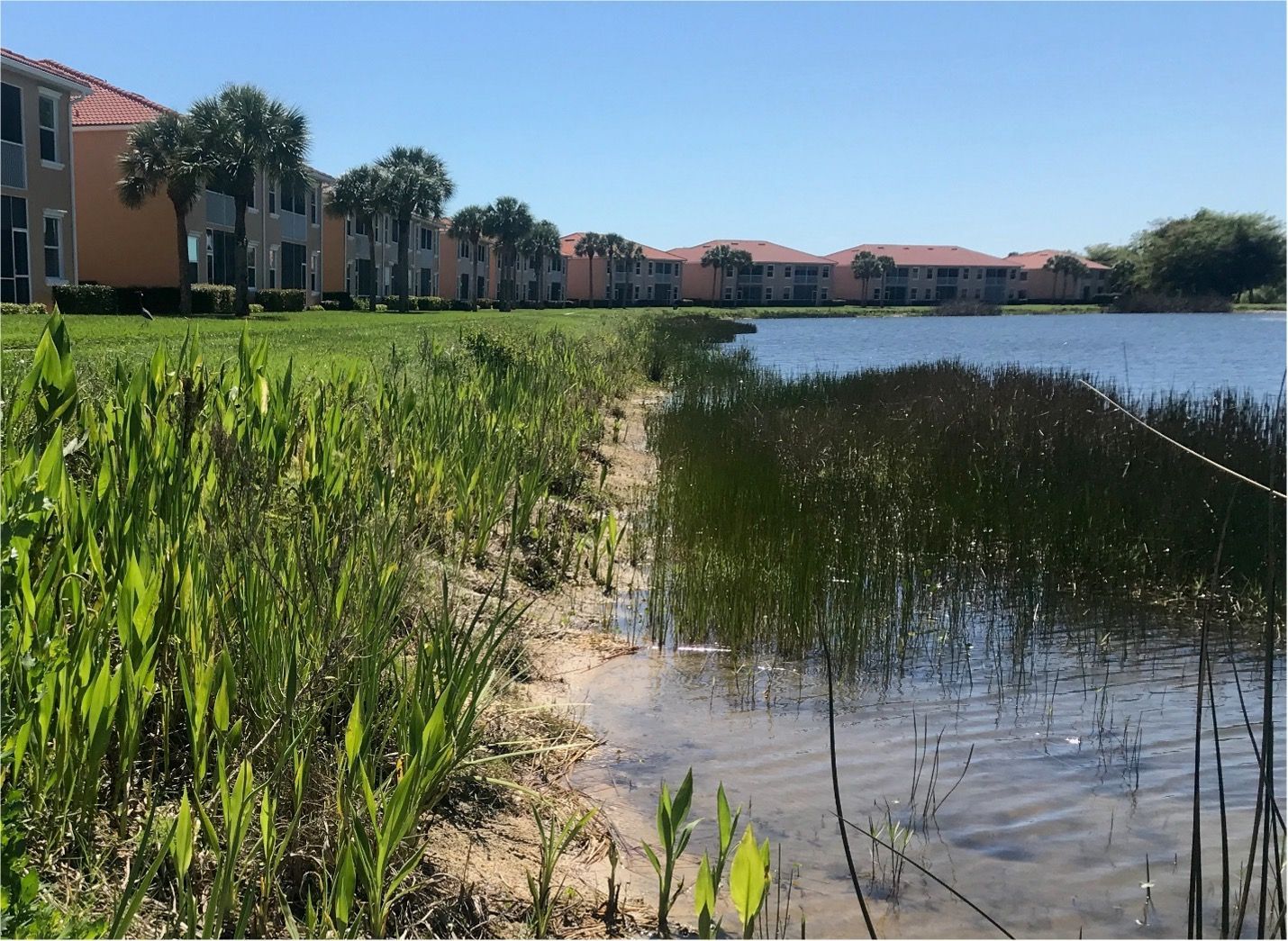Lake Maintenance
In order for a man-made lake to maintain its appearance and function, it must be properly maintained. Although a lot of factors are involved in lake and pond maintenance, at the most basic level, a healthy lake essentially has clean water with a well-balanced pH, a flora and fauna population that is entirely or mostly native, shorelines with thick, healthy littoral shelves and no erosion present, and a frequently maintained storm-water management system that ensures proper handling and discharge of rainwater.
For proper maintenance, each spray technician must have a knowledge of the species of plants growing in the lake and on the shoreline. They must also know how to kill/remove the exotics without harming the beneficial native species. When exotic species (weeds) get out of control, they harm the native flora and fauna and can affect water quality. Exotics must be sprayed with an EPA or DEP approved herbicide and must be hit surgically by a seasoned technician so as to avoid overspray onto beneficial native littorals in the vicinity. This is one of the most difficult tasks for a large lake maintenance company to complete properly because of the hundreds or thousands of lakes they must treat each year. So, try to stay away from the huge companies (several dozen to hundreds of maintenance accounts) where you are just a statistic. The company you hire should have a horticulturist, botanist, or biologist on staff in order to help solve complicated lake problems when the need arises.

Above Picture: A healthy shoreline with plenty of littoral plants present (South Florida).
A lake maintenance company must also monitor the pH of the water as well as its algae and toxins content. Stormwater pollution, bacteria, decomposing matter, and salinity are all potential problems with the water quality on freshwater lakes.
If fish and native fauna are present, a fountain or aerator are crucial to keep them healthy. Sometimes fish are introduced in order to help mitigated unwanted unwater weed growth.
The shoreline on the lake must be stabilized and secured to prevent erosion. Too much erosion can lead to unsafe shoreline conditions, altered water depths, and code compliance issues.
A good lake maintenance company will notify the community of potential problems such as erosion, dead or dying littoral plants, unwanted algae blooms, etc. If your lake maintenance company is in-and-out each month or quarter with no communication, report, or follow-ups, it is time to search for a new one. One of the largest issues with improperly managed lakes, ponds, rivers, or canals is that it is a competitive industry in which companies must undercut their competition, cut corners, and fail to follow through on promises and contracts. This leads to a market where communities and clients think they are getting a “good deal” with a cheap vendor, but quickly find out that their water is murky and their shoreline is void of plants, costing them tens or hundreds of thousands of dollars in repairs.

Above Picture: Care must be taken to spray only exotics with herbicide so that the surrounding natives can thrive and colonize.
If one of your lakes seems to have different water color or quality than the others, it may be receiving toxic discharge from a neighboring community or commercial property. You should notify your local Water Management District office to see if they can investigate.
Recent Posts






